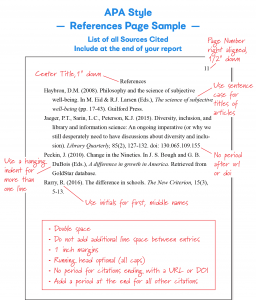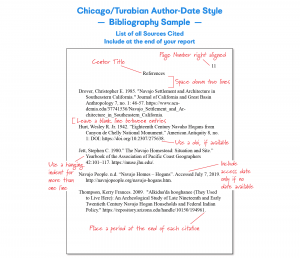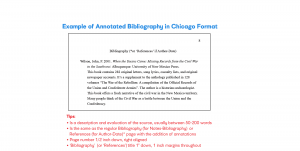How to write a bibliography with 3 Examples

How to Write a Bibliography
The requirement to write a bibliography at the end of a piece of work is difficult for most high school and college students when they are first required to do it. This can happen when one is handling a master’s or undergraduate dissertation, or even a formal essay. However, writing a bibliography is not as difficult and complicated as many people might think.
This guide can help you to write one easily since it has the essential pointers for you to keep in mind when writing it. Read on to discover how to write your best dissertation bibliography yet. A sample of bibliographies has also been provided.
Check out the following :
- How to Write a Bibliography in APA
- How to Write a Bibliography in MLA
- How to Write a Bibliography in Harvard
- How to Write a Bibliography in Oscola
- How to Write a Bibliography in Chicago Styles
What is Bibliography
Though the name does not sound like it, a bibliography is quite a simple thing. It is a list of the sources that you have used or referred to in writing an essay. It is written at the end of your master’s or undergraduate dissertation. The list of sources will include all the what you have quoted and referred to in the essay as well as further materials that you read when researching the piece, even when you did not quite cite them.
What are primary and secondary sources?
Primary sources
Primary sources are first-hand accounts. They are the actual documents or objects that were used by people at the time. They are the original materials or evidence to be analyzed, evaluated, contextualized, or synthesized in the research process. Primary sources may include diary entries, interviews, oral histories, photographs, newspaper articles, government documents, poems, novels, plays, and music.
For example, if you were studying what life was like for a Roman soldier you would be looking for documents written by soldiers at the time such as diaries, letters or reports. An archaeologist may use items such as weapons, pots and coins to find out more about how people lived in the past. This would also be classed as a primary source.
Secondary sources
Secondary sources are accounts of events written after they have happened by someone who was not involved with them. This means that they are written based on things like interviews, photographs and videos of an event rather than first-hand experiences. They are interpretations and analyses based on primary sources. Secondary sources may have pictures, words, or graphics of primary sources in them. Secondary sources may include textbooks, articles from academic journals examining research reports (not research reports themselves), and literature reviews that place the research into a historical context.
For example, if you were researching the Battle of Hastings you might read a book about it that has been written by someone else based on their research into original documents and artefacts. A secondary source could also be a photograph taken during an event which is then shown later in a book
What should you include in a bibliography?
- Include all the documents you consulted, even if you did not cite them – i.e., not just the ones that helped you make your argument, but also those that helped you find the sources that helped you make your argument. The reader will be able to tell what sources you actually consulted, but will not be able to tell which sources might have helped you shape your argument if only you had read them. If a source was especially helpful but did not make it into your final list of references, consider mentioning it in a footnote.
- If there are multiple authors, list them in order as they appear on the source. If there are more than three authors, list only the first author followed by the abbreviation “et al.”
- Include both author and title of the article, but may also include editor, publication date, publisher and city, volume number and/or page number if it is a journal or magazine article.
Information required for referencing printed sources
- The name of the publishing company.
- If you’re referencing a magazine or printed encyclopedia, record the volume number.
- The date of publication.
- The page number in the book where the citation can be found.
- The title of the article or publication
- The name of the author.
Information required for referencing web sources/Internet Citations
- The full title of the webpage (webpage can also be the online versions of print publications, a journal article, note card,).
- The company that created the webpage.
- The URL of the piece.
- The name of the author or editor.
- The last date you visited the webpage.
Where to find this information
- The header or footer of the webpage.
- The contents page (for magazine or journal articles).
- The contact, or about, page of the website.
- The first, second or editorial page (for newspapers).
What are the different bibliography styles?
There are multiple accepted bibliography writing styles, and they affect which information is included and its order of presentation. These include Harvard, American Psychological Association (APA), Chicago, Modern Language Association (MLA), and others. However, make sure that you find out the exact requirements on the type of citation and the bibliography format that you are to use, given by the course provider or your university.
Keep in mind that among the useful things you can do for your bibliography is to keep it consistent. For the style that you choose, stick to it in the entire bibliography. Having the simpler author-date style bibliography, which is one of the writing styles in scientific papers is significant. Check the sample of bibliographies below, applicable in an academic paper
MLA reference order
- Full name of the author (Authors’ last names first).
- The title of the book.
- Publication place.
- The name of the book publisher.
- The publication date.
Bibliography Example in MLA:
Tabish, S. A. “Lifestyle diseases: Consequences, characteristics, causes, and control.” Journal of Cardiology & Current Research, 9. 3 (2017): 1- 4.
APA/Harvard reference order
- If using Harvard referencing, title your bibliography as ‘References’.
- Author’s last name.
- Author’s first initial.
- The publication date (in brackets).
- The book title.
- The publication place.
- The name of the book publisher.
Bibliography Example in APA:
Meiner, S. E. (1999). Nursing documentation: Legal focus across practice settings. Thousand Oaks: Sage.
MHRA reference order
- Author’s first and last name
- The title of the book
- Publication place.
- The name of the book publisher.
- The publication date
Points three to five should all be included in the same bracket.
How to write a bibliography
- The bibliography should include all the sources used for reference. It does not matter how many sources you have used. You must include them all in the bibliography on the last page.
- You must cite your works in different formats such as APA, MLA, Harvard or any other basic format required by your professor.
- Use a hanging indent of 0.5 inches for every new line of a citation.
- You need to take note of the authors’ name, the publication’s title, publisher, date of publication and page numbers.
- Entries in the bibliography should be alphabetized by the last names of the authors. If a book has more than one author, use the first name of the author listed in alphabetical order.
- When an author appears both as a sole author and, in another citation, as the first author of a group, list the one-author entries first.
- Each source should begin on a new line.
- Bibliographies should be placed at the end of your assignment.
- Collect citation information as you go.
The sample of bibliographies
APA Reference Example

Chicago or Turabian Bibliography Example

Annotated Bibliography Example

Authenticity and Confidentiality Guaranteed
The authenticity of our freelance essay writing and the confidentiality of all the information is guaranteed.
We do not disclose the private information of our customers, and we do not reuse ANY custom papers.
Order custom-written term papers, sample essays, thesis papers, research papers, book reviews, dissertations, speeches, book reports, and other assignments.
Exclusive writing in approximately 70 subjects. NO PLAGIARISM
Common Writing Assignments, Apps & Tests
Find helpful writing tips and example papers for various types of writing.
- ACT Essay
- Analytical Essay
- AP synthesis Essay
- Argumentative Essay
- Book Report
- Compare and Contrast Essay
- Cause and Effect Essay
- College Admissions Essay
- Critical Analysis Essay
- Definition Essay
- Descriptive Essay
- Dissertation
- Explanatory Essay
- Expository Essay
- GRE Essay
- Informative Essay
- Lab Report
- Narrative Essay
- Opinion Essay
- Personal Essay
- Persuasive Essay
- Reflective Essay
- Research Paper
- Rhetorical Analysis
- SAT Essay
- Scholarship Essay
- Short Essay
- Term Paper
- Thesis Paper
FOR ANY HELP KINDLY PLACE AN ORDER WITH US

